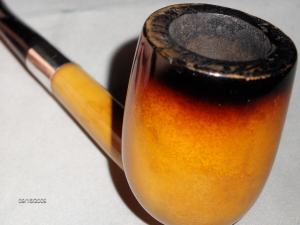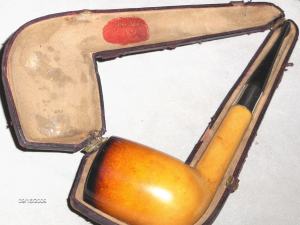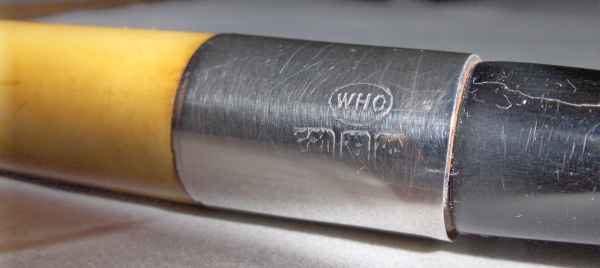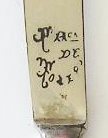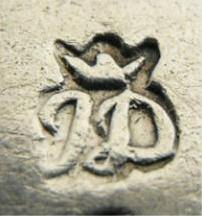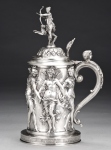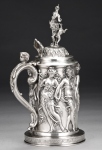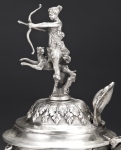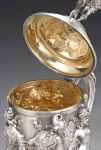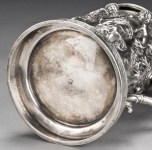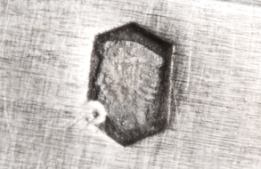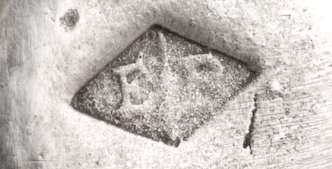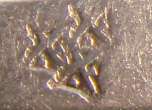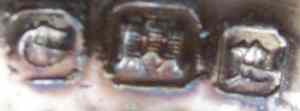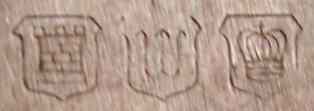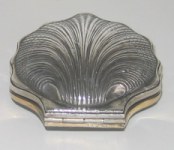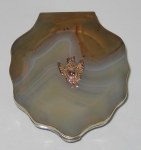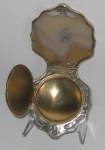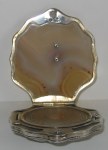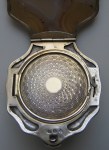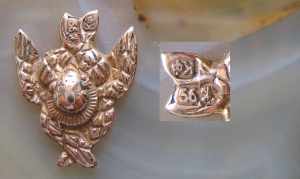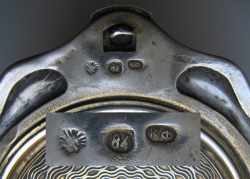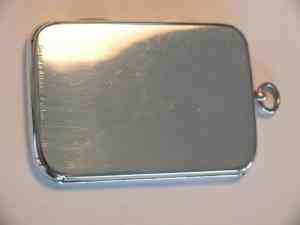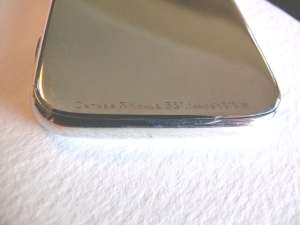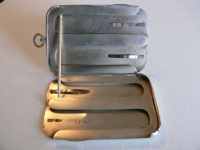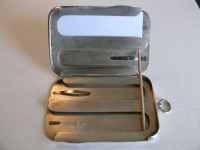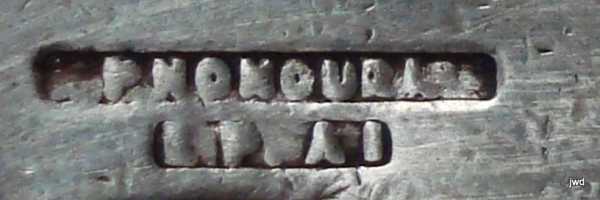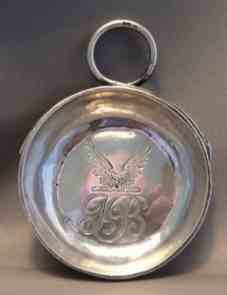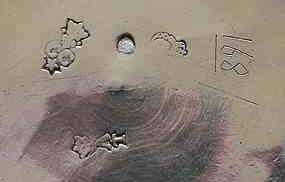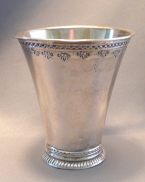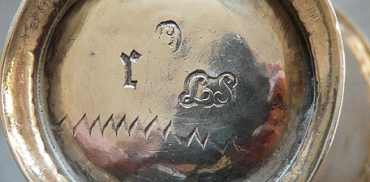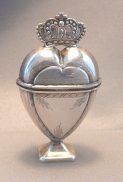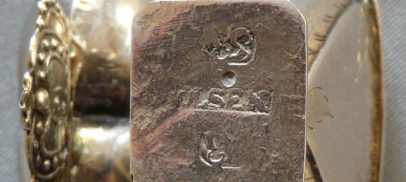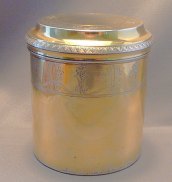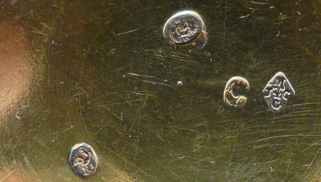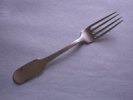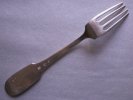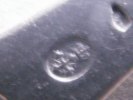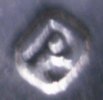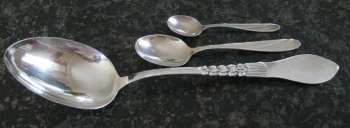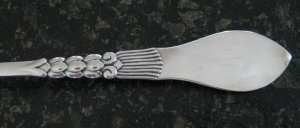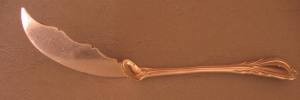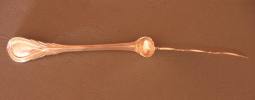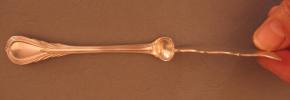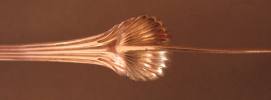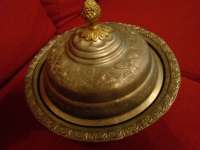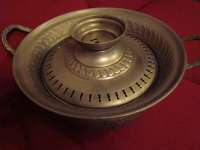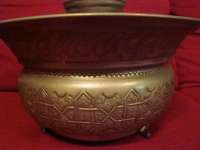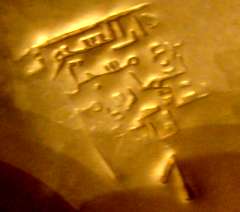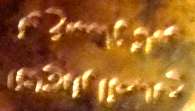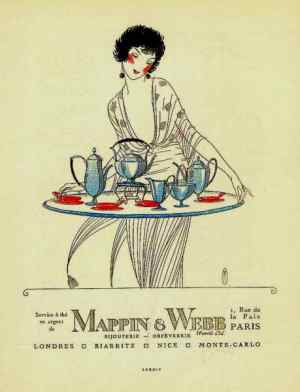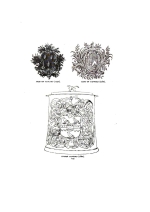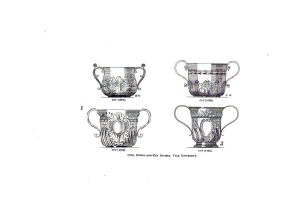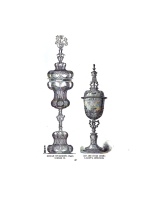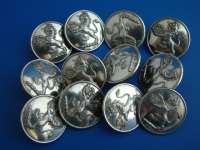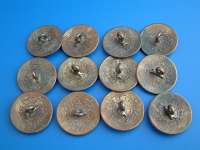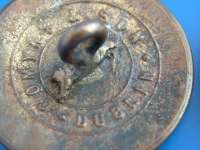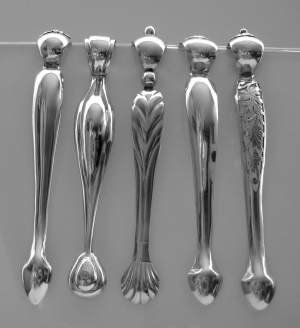
Dorothea Burstyn presents:
Collecting Austrian silver sugar tongs 
.....While English sugar tongs are available in a wide
variety of styles and in abundance from the early 18th
century on, the collector of Austrian sugar tongs is
limited to 19th century production from about 1820 to
1880, because a) due to the draconian laws during the
Napoleonic Wars very little old silver escaped the
melting pot and b) towards the end of the 19th century
silversmiths did not regard sugar tongs as single
serving pieces anymore but fashioned them as part of
tea-and coffee sets or larger flatware services......
click here 
|
Welcome to new ASCAS members:
Deb Andrison - USA
Erica Azimov - USA
Gerald Bartley - England UK
Margaret Bartram - Canada
Robert Butler - USA
Simon Buxton - Australia
Kate Cook - USA
Jeff Cullen - USA
Maria Entrup-Henemann - Germany
Jurg Gassmann - Switzerland
Jill Hedgren - Sweden
Shawn Holatko - Canada
David Joyce - England UK
Andreas Romanos - Belgium
Larry A. Sauer - USA
Florence Vivien - France
Alastair Wilson - England UK
Members' Window # 66
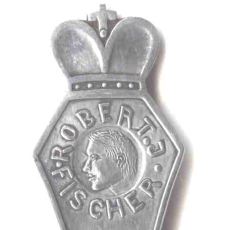
Wayne Bednersh presents:
The Fischer Chess Spoon Story 
At the 2001 National Spoon Convention in Colorado
Springs, Erwin Goldman convinced me to acquire this
unusual spoon and to write an article about it.
Therefore, this article is dedicated to Erwin Goldman.
The pictured spoon is a heavy 5.75" art deco style
sterling spoon made about 1972. Sterling spoons were not
hot collectibles during that time period so it is rather
unusual to have a sterling spoon commemorating any event.
This spoon, however, commemorates the very famous cold
war Chess World Championship between American chess
genius Bobby Fischer and the Russian Grand Master Boris
Spassky which was held in Reykjavik, Iceland......
click here 
|
Piero Eduardo writes:
...Caro Giorgio,
I collect pipes and I'm trying to find further details about an
ancient sea-foam pipe with silver ring. The pipe's container is
marked has a Peterson's Patent and I know that its " Patent"
mark was used from 1865 to 1910. I'm unable to identify the
maker of the silver complement (WHC inside an oval. Possibly
W.H. Handsworth of Birmingham?).
Any suggestion will be highly appreciated.
Piero Eduardo
The silver mark in your pipe belongs to W.H. Carrington &
Co, 53 Thomas Street, Manchester. This mark was registered in
Chester in 1888 c. and in Birmingham Assay Office on April 24,
1891. The firm was identified by Chester Assay Office as "Tabacconist
and fancy goods dealers".
Giorgio Busetto
Any suggestion will be welcome
Giorgio Busetto
The help of ASCAS members will be greatly appreciated
Giorgio Busetto
Peter Lockett writes:
...I need the help of members to identify the mark on a dognose
fork. The fork was purchased in a small group of pieces of which
all but this fork have 18th century Belgian marks.
Peter Lockett
Dominique Bochet writes:
...I'm reserching information about the marks of this fork.
Merci à tous pour votre aide
Dominique Bochet
Erica Azimov writes:
...I am new to collecting and I have 2 sets of Hallmarks that I
am having a hard time figuring out. I wasn't sure if I sent
pictures if there is a way to see if anyone can help me out. I
have attached the pictures just in case.
Thank you
Erica Azimov
I believe that the first mark (on the left) is, possibly,
a mark of Corbell & Co (see information in my private website at
http://www.silvercollection.it/AMERICANSILVERPLATEMARKSCDE.html
).
I'm unable to identify the other mark. I trust in the help of
ASCAS members.
Giorgio Busetto
Giovanni Ciceri writes:
...I have this silver and agate compact with Russian hallmarks.
The weight is a combined 116 g. Dimension: 7.6 x 6.7 x 2 cm.
It is hallmarked inside in all the detachable parts and outside
on the final that seems to be gold or gilded silver. It is
partially gilded.
The quality of the compact is very good and the condition is
quite good too. I think that in the four halls inside the
compact it was originally enamelled (but I’m not sure).
I’d like to know the origin, age and silversmith.
Other images are available in my website at
http://www.argentinglesi.com/compact.htm
Thank you
Giovanni
As you well know, the marks appear to be those of Karl
Fabergé, but on the market there are many forgeries about this
silversmith. It's beyond my level of knowledge to express any
opinion about the authenticity of your piece and I trust in the
support of other ASCAS members with a superior acquaintance in
this matter
Giorgio Busetto
The item has many hallmarks. Each hallmarks looks as Faberge's marks.
Sankt-Petersburg/ 94 - sterling, 56 - gold. But the quality work looks not as Faberge.
Market is offered many fake item with original Faberge's hallmarks. An expert must look
the item.
Lazar Freidgeim
David Dubin writes:
...Could you please help me with some information on a coffee can that I picked up in Germany
in the 70s that was manufactured by August Wellner and Sons? I believe that it was made for
the hotel Kummelbacherhof sometime around 1910 - 1920 and that it is either pewter or
silver-plated copper. Would you be able to tell me when it was made, what the material is and
any other information about it that I should know? The piece is about 18 cm tall to the button
on the lid and about 9 cm wide at the base. I have attached three photos of the can for you.
I greatly appreciate any assistance that you are able to give me.
Thank you very much in advance for your time and effort on my behalf.
Kindest regards,
David Dubin
This coffee-pot was made between 1915 and 1920. It was made from silver-plated Alpacca
(Neusilber). The handle is very characteristic for high-quality Wellner items made in 1915-1930.
David Nikogosyan
I'm unable to identify your mysterious mark. I trust in the help of ASCAS members for
its identification.
By the way, the Elkington marks is dated 1957 (see my website
at http://www.silvercollection.it/Elkington.html)
Giorgio Busetto
Replies to questions
Christophe Ginter writes:
I am pleased to give you the (full) information regarding the
Peter Barnes's wine-taster. The following hallmarks may be read
on the item:
(1) a CC under a crowned fleur de lys and over a star for the
silver maker Charles Louis CAFFIN, appointed in Thouars in 1763,
active until (at last) 1784,
(2) a crowned A over a T, is a warranty mark used in Thouars
from 1777 until 1781. This mark gives the date for this item,
(3) a crowned G (partly erased) which is a "Charge" mark (equivalent
to submitting the item to the tax authority). This mark was used
between 1775 and 1781 in a western part of France, with
headquarters in Poitiers. I may guess that our ASCAS fellow
members should feel difficult to locate the town: please find
herewith an attached map of France for locating Thouars and
Poitiers.
(4) the fourth mark that cannot be properly distinguished on the
image should be the "Discharge" mark in the same region, period
1775-1781. This mark is the last mark to be struck on the item,
it means that the tax has been paid (hence "discharging" the
item for a further submission to the tax authority). The
discharge mark is probably a "cat" (see attached image).
Christophe
Mario Galasso writes:
about the tastevin of Peter Barnes:
the image isn't well readable, anyway two marks are identifiable:
- the maker (CC over a star and under a crowned fleur de lys and
aside two "grains de rémede") is Charles-Louis Caffin, active
from 1763, garde in 1784 of Thouars;
- A T with a crown at the top is the mark of the communité of
Thouars from 1767 to 1781.
Bibl. Helft, Les poinçons des provinces françaises, Paris 1968
Mario Galasso
Kari Helenius writes:
Peter Barnes asked for identification of the marks of his
Swedish beaker. The beaker was made in Stockholm in 1753 by
Lorens (Lars) Eriksson Stabeus 1745 - 1778
Kari
Willand Ringborg writes:
Master is Lorents (Lars) Stabeus, working as silversmith in Gothenburg since 1729, 1735
master, worked from 1745 in Stockholm, alterman in the Stockholm Goldsmiths Guild 1761-70.
Well-known, high quality works-of?art, represented in several churches and museums. Produced
mainly corpus items.
The decorative sig-sag pattern is a scratch made by the assay-master for silver fineness
proof.
Willand
Kari Helenius writes:
I found two makers from Demark with the mark OLSEN.
One from Odense Fredrik Vilhelm Olsen born 1833 and active 1857
- 1890
The other from Nyborg, Poul Olsen born 1797 and active 1824 -
1862
I could not recognize the town mark or date mark
I hope that this is of help.
Best regards
Kari
Mario Galasso writes:
About the dresser jar. If the code number on the "old man"
mark is 85 (Paris), I believe that the maker's mark is M.J.G.G.
(and not M.J.C.C.). If so, the maker would be Genu
Marie-Joseph-Gabriel, Orfèvrerie: la belle argenterie, 24 rue
des Fossés-St-Germain-l'Auxerrois. Insculpation Paris 20
decembre1788, biffage 1811 (Almanach azur: Genu veuve). N.
Prefecture 107, n. garantie 85.
Bibl. Arminjon et alii, Dictionaire des poinçons de Paris et de
la Seine, 1798-1838, p.267, n. 02653, Paris 1991.
Beuque vol II, 1929
Markezana 2005
Mario Galasso
Dominique Bochet writes:
Il s'agit du maître orfevre Marie-Joseph Gabriel GENU, Paris
période 1er Coq, 1798-1809, grosse garantie
Dominique Bochet
Mario Galasso writes:
About the fork of Paola Continella, if the mark is only a "P"
(without any other symbol or dot) the maker is Henri Potin (not
Poton Enrico as erroneously written in Donaver's book),
registered in Chambery, August 23, 1847, Etat des orfèvres n.26,
son poinçon un P (fonds Sarde ADS 20 99).
Bibl. C.G. Cassan, Les Orfèvres de Savoie, on the magazine Art
et curiosité n. 80, September 1980 and Donaver Dabbene Voll.I e
II, Milano 1989
Mario Galasso
Oskar M. Zurell writes:
Spoon is a server - Plated - all silver mark's of that time
be missing here
. Pattern style typical Danish of that time after WW I.
All shown marks should be observed vertically:
First mark isn't an anchor but symbolises «Thor's» (an ancient
German god's) hammer: That mark was sign of private Danish Trade
Promotion Association «Landsforeningen Dansk Arbedje» (Promotions
signification: «Quality Product - Made in Denmark» and «Buy
Danish Quality Products») from 1908 on - with promotional
activities for all kind of Danish products - not only for Silver
or Plated - in Denmark and abroad. «DA» is since 2002 part of a
Danish merger for Worldwide Trade Promotion.
3 Stars: It's a symbol in similarity to 3 towers, Cohr's
signification of her «Plated» quality - from 1926 on traded as
ATLA (signification: strong surface and resist use attacks),
Cohr's trademark.
CMC (last C in reverse position): Carl Madsen Cohr, Fredericia -
this mark was in use on both, Silver and Plated, from 1893 until
1937. «Cohr» itself exist 50 years more; but had finally to
suspend the payments and was closed 20 August 1987.
Resume: This server is produced by C.M. Cohr in Fredericia,
Denmark. Artist and Pattern actually I don't know. Spoon's
production was between 1921 and 1926.
In Denmark this kind of server spoon is called "Potageske"; be used to serve
potage, porridge ... Your "Potageske" has a length of 37 cm. I've found a Private
Collector's Site; there length differ between 36 cm and 40.7 cm - and it seems that they
call soup ladle "Potagesk" to: http://www.soelvske.dk/Web/Diverse/Typer/Potageske
Additional information, taken out of: http://www.cemifor.dk/cohr/index.htm
At this time Cohr was the largest silverware factory in Denmark
and used several well known artists: Eduart Eggeling, Knud V.
Engelhardt, Sigfred Wagner, Mogens Koch and H.F. Gross.
In Denmark - when Cohr started 1921 her plated product range in
flatware and hollowware - didn't exist a nationwide symbol for
this. Some times later were used the letter P (in a circle,
signification = Plet = Plated) and introduced the «Two towers»
mark, to be used by all Danish producers of plated products.
That's failed until 1929, because there wasn't any guarantee of
similar quality standard.
DS - Danish Standards Association Founded in 1926. Denmark's
national standardisation body. DS marking is the visible
evidence that a product meets the requirements laid down, for
instance, in a standard covering the particular product group.
Cohr used DS marking from 1931 on.
Torch mark FDG: In 1929 the "Common Representation of Danish
Goldsmiths" (FDG = Fællesrepræsentationen for Danmarks
Guldsmede) registered the "Torch mark" as a trademark and wanted
it to be used as a quality mark for silver plated sold by the
members only.
Torch mark: Quality mark for silver plated. Used by the
"Organisation of Silver plate Manufactures" ("Foreningen af
Sølvpletfabrikanter") after they took over the rights to the
torch mark from FDG about 1932.
Oskar M. Zurell
Ian Cook writes:
I believe I may be able to help Claudio Morelli quest in
identifying his object.
I would like to submit that the piece is a butter knife in an
early style (Georgian c1790s) which has been later copied. The
marks point towards the piece being made by John Harrison &
Company (Sheffield) between 1866 and 1891.
Ian Cook
Hada Shamma writes:
The items are an incense burner, a food server, these pieces usually come in sets.
What you have here may not be silver but a white metal, known as alpaca silver. There’s also
a possibility that the pieces are silver plated copper. These are not Iranian but Moroccan
pieces, notably identified by the markings.
The writing says that this is manufactured by Dar Al Suyooz, the workshop it was created in.
There is a name Othman but the rest is unclear. It says it has been registered as well.
Regards,
Hada Shamma
"A PAGE per MONTH"
In this column we present a page
obtained from makers' brochures, books, auction catalogs,
advertising or whatever other printed paper, related to silver,
that may be of interest for ASCAS members.
The images will be published at a "low resolution" level and for
private and personal use only
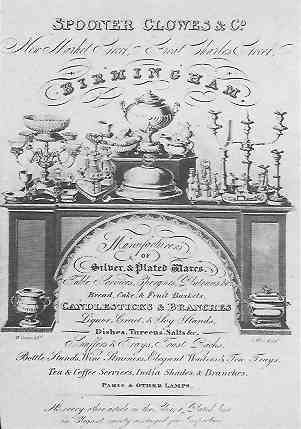 |
This month ASCAS presents an 1823 trade card of
Spooner, Clowes & Co of Newmarket Street and Great
Charles Street, Birmingham.
The firm, subsequently Spooner, Painter & Co advertises
its
Silver & Plated Wares
Table Services, Epergnes, Plateaus &c,
Bread, Cake & Fruit Baskets
Candlesticks & Branches
Liquor, Cruet & Soy Stands
Dishes, Tureens, Salts &c.
Snuffers & Trays, Toast Racks
Bottle Stands, Wine Strainers, Elegant Waters & Tea
Trays
Tea & Coffee Services, India Shads & Branches
Paris & Other Lamps
|
"A WORD per MONTH"
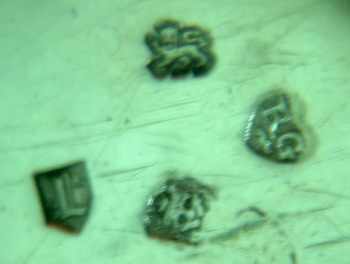
|
DUTY DODGER
DUTY MARK
PSEUDO HALLMARK
In England duty has been paid as a tax on silverware since 18th Century. The tax
was paid at the time of assay,
and the amount due related to the weight of the article. From 1784 until 1890 a
mark with the head in profile of the Sovereign in escutcheon was punched on articles
to attest that the excise dute had been paid.
"DUTY DODGER" is the definition of unscrupulous silversmiths that used several methods to avoid paying
the tax:
- inserting into a new article an existing set of hallmarks removed from an old piece;
- stamping his own makers mark four times to simulate hallmarks and then distorting them (especially on spoons) so that an unwary buyer
might think them to be official marks of the Assay Office;
- inserting into a large piece a small disk bearing marks from an article on which a low tax had been paid.
Duty Dodger is also the definition applied to a piece so altered and considered fake and illegal.....
more
|
"A SILVERSMITH per MONTH"
|
|
MAPPIN & WEBB
Joseph Mappin founded in
1810 a trade as engraver in Fargate, Sheffield. This
concern passed to one of his sons and finally the
engraving business came to an end.
Another son of Joseph Mappin (he too called Joseph)
carried on the business of the cutler in Sheffield
(Norfolk Street).
He died in 1841 and till 1846 the firm was managed by
his son Frederick Thorpe Mappin who took his brothers in
the business and the firm became Joseph Mappin & Co.
In 1846 the business was amalgamated with that of
William Samson & Sons changing to Mappin Brothers.
Its partners were the founder's four sons, Frederick
Thorpe Mappin, Edward Mappin, Joseph Charles Mappin and
John Newton Mappin.....
more
|
"A BOOK ON MY SHELF"
In this column we present books, new
or ancient, dealing with silver in all its aspects (history,
marks, oddities...). This isn't a "book review" but only a fair
presentation of some useful "tools" that anyone may have in the
shelf of his bookcase.
ASCAS members are invited to contribute to this column
(click to enlarge images)
The "book on my shelf" of this month presents:
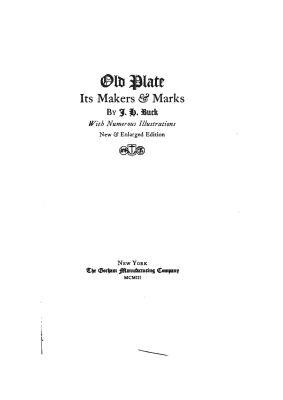
|
The author writes in book's
preface:
It is the object of this new issue of Old Plate to
attempt a description of some of the many examples of
silverware to be found in various parts of the country,
made not only by foreign but by native craftsmen, and to
endeavor trace more especially the names and abodes of
the latter.
Prof. T.S. Woolsey, of Yale University, writing in
Harper's Magazine, urges the importance of investigating
more fully the subject of American silversmithing.
English silversmiths emigrated to this country and did
as good work here as at home. As we learn the names and
marks of these men, and can thus identify their work,
why is it not, for us at least, as valuable and
interesting as any other? What we need is a careful list
of such workmen, with their dates and the marks they
struck... But it needs a vast amount of work. The town
records should be searched on the one hand, and
thousands of examples of American-made plate should be
catalogued and collated on the other, as Rosemberg has
done for Germany. When we are able to identify the
makers' marks of nine-tenths of the American-made plate
treasured by our Colonial families, thus learning where
and between what dates it must have been made, it should
have in our eyes a value such as no foreign plate of the
same age can boast.....
The Fourth Chapter " American Silversmiths" is freely
available in PDF format in ASCAS website
click here
|
"A CREST per MONTH"
In this column we present images and
description of Crests and Mottoes of British, Irish and Scottish
Families as engraved in silver items.
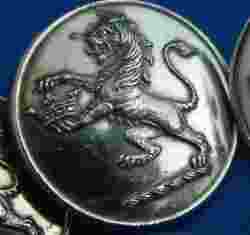 |
CRADDOCK or CRADOCK and others
An Irish family. The crest
is a lion rampant, between paws a ducal coronet
A similar crest was used by English families: Beseley,
Besley, Besly, Ford of Ellen Hall (Lanc) and Roper
The crest was found in a set of old Sheffield Plate
buttons manufactured by Comyns & Son, Dublin
|
Closing our NOVEMBER 2009 edition of ASCAS
Newsletter I hope you have appreciated its content.
Your comments, suggestions and advice will be of great help.
My thanks to Peter Barnes,
Erica Azimov, Wayne Bednersh, Dominique Bochet, Dorothea Burstyn,
Giovanni Ciceri, Ian Cook, David Dubin, Jayne Dye, Piero Eduardo, Mario
Galasso, Christophe Ginter, Kari Helenius, Derek Jones, Peter
Lockett, David N. Nikogosyan, Willand Ringborg, Hada Shamma, Michael Shatkin, Adriane Shuford
Crosland, Oskar M. Zurell for their invaluable contributions.
Giorgio Busetto
Secretary
DISCLAIMER AND PRIVACY POLICY
ASCAS is a community of people having a common
interest in antique silver.
It is a non-profit association without commercial links.
Membership is open to whomever has a true interest in
this subject matter.
ASCAS has no real property and no fees are requested nor
accepted from members.
ASCAS keeps in touch with its members only through
periodical newsletters, e-mails and web-site updating
and ignores and is not responsible for any other
activity pursued by its members.
Likewise, ASCAS is not responsible for opinions,
evaluation and images displayed, and in any form
published or supplied for publication, by its members
who, in any case, maintain the property of their works
and assure the respect of national and international
legislation about Intellectual Property.
ASCAS does not have the full addresses of its members (only
town, country and e-mail address are requested for
membership).
ASCAS handles and protects with care its members' e-mail
addresses, will not disclose the addresses to third
parties, will use this information only to reply to
requests received from members and for communications
strictly related to its activity.
These rules are expressly accepted by submitting the
membership request.
|
|
 newsletter
# 66 NOVEMBER 2009
newsletter
# 66 NOVEMBER 2009






